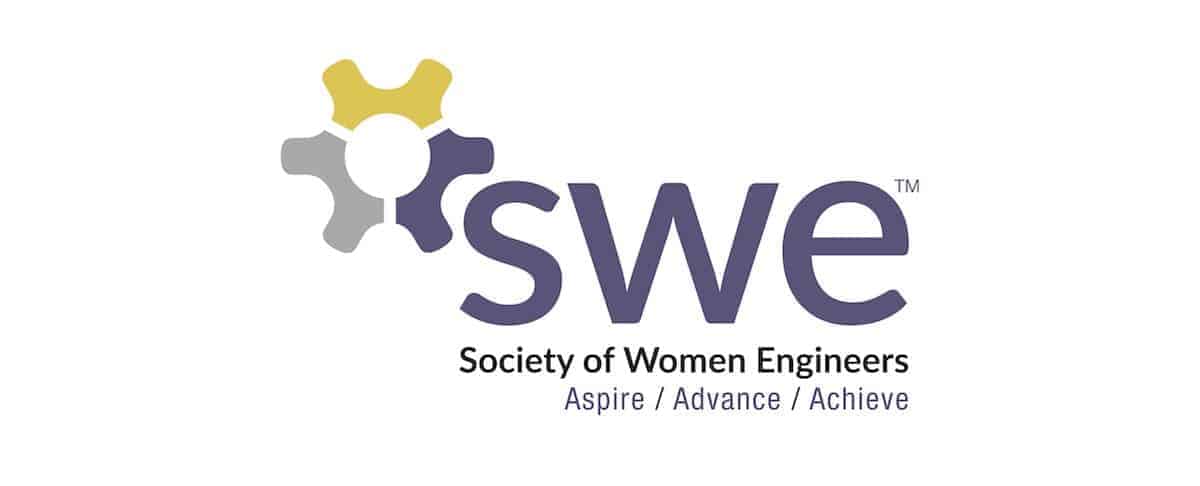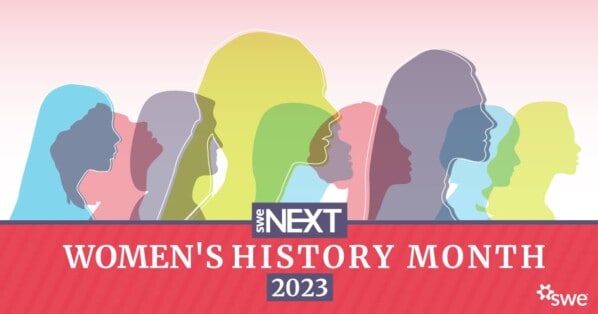Our Diverse podcast is brought to you by SWE Advance, supporting the recruitment, retention and advancement of women in engineering through career resources, professional development and one-to-one networking opportunities.
(Jonna)
Hi, I’m Jonna Gerken, FY18 President of the Society of Women Engineers, and this is SWE’s Diverse podcast series. Please remember to add this podcast to your iTunes and like or follow us on social media. Visit swe.org for more details.
Joining me now to discuss some new research about community college transfer students is Dr. Roberta Rincón. She is the Manager of Research for the Society of Women Engineers.
Thanks for joining us, Roberta.
In your role as SWE’s Manager of Research, you study issues affecting women in engineering. SWE recently released a report on community college transfers in engineering and computer science. What prompted the focus for this research?
(Roberta)
There are a couple of reasons why it was important to conduct this study at this time. First, SWE is part of the 50K Coalition, a collaborative initiative with NSBE, SHPE, and AISES, that includes multiple member organizations working together to increase the diversity of the engineering profession. The overall goal is to increase the number of diverse engineering graduates from 30,000 to 50,000 by 2025, which includes women and underrepresented minority groups including Hispanic and African American graduates. To meet this goal, the 50K Coalition has a few key areas that we are focusing on, one of which is to increase the number of two-year to four-year engineering college transfers. About 40% of undergraduates in the U.S. attend two-year colleges. And if we are interested in diverse student populations, we cannot ignore community colleges. Half of all African American undergraduate students are enrolled in community college, and over half of all Hispanic and American Indian/Alaskan Native undergraduates are enrolled in two-year colleges. And there are a couple of key points about community college students that really highlight the need to consider transfer students in our work. First, over 80% of first-time community college students indicate that they want to complete a bachelor’s degree or higher, so the aspirations are there. Second, research shows that over 65% of students who declare an engineering major and transfer to a four-year university eventually earn an engineering bachelor’s degree. This indicates the need for organizations like SWE to consider the multiple pathways that students take to earn a degree in engineering.
This leads me to the second reason for conducting this study at this time. SWE has included in its strategic plan a goal to increase our presence, influence, and engagement with students at two-year colleges. We know that many engineers start their career at two-year, technical, and vocational institutions, but we need to develop a better understanding of how we can effectively support students at such institutions. We know that we cannot simply offer the same programs and services as they are delivered to university students.
(Jonna)
Why did you conduct the study in Texas?
(Roberta)
We chose to conduct this study in Texas because of the size and diversity of the student population, the fact that 75% of bachelor’s degree earners in that state have some amount of community college credit[1], and, frankly, we had easy access to the data. Texas has an Education Research Center that allowed us access to ten years of higher education data, so we were able to not only look at transfer student success, but we were able to see popular transfer pathways between institutions across the state. And to give you an idea of the scope, Texas has on average about 210,000 students entering college for the first time each year. It has 50 public community college districts (and quite a few have multiple campuses), and over 70 universities, both public and private, across the state. SWE conducted this study intending to gain a better understanding of transfer student success, particularly among women and minorities who are underrepresented in engineering and computer science.
The problem that we sought to address was the lack of disaggregated data available to help us and our partners understand how successful underrepresented students are when they begin their engineering studies at a community college. A ton of resources have gone in to STEM programs, we know this, particularly around broadening participation and increasing the number of STEM graduates to meet job market demands. We also know that a number of states, including Texas, and many higher education institutions have given a lot of attention to improving their transfer pathways to help make transfer more seamless. Granted, there is a lot of work still to be done, of course. But given all the resources invested in STEM and transfer, we don’t really have good data to understand STEM transfer success because reported data really focuses on one or the other. Transfer success is rarely broken down by major, much less broken down further by gender or race. So SWE wanted to pull this data and analyze it to find out how successful women, particularly minority women, are when they declare a major in engineering or computer science. How many transfer? How many graduate? We wanted to know if success varied by race, part-time versus full-time status, engineering discipline, academic preparation, etc. so that we could understand what factors help or hinder their success. It really was an exciting study to undertake.
(Jonna)
I understand that you encountered a surprising challenge when you started analyzing the data. Could you explain?
(Roberta)
Well, it turns out that we couldn’t analyze the data the way we initially intended because the number of women transferring and graduating in engineering and computer science in Texas were too few. We knew going in that fewer women than men were transferring in these majors, but just how small those numbers were surprised us. The Texas Education Research Center that houses the data places restrictions on what they will release to researchers when headcounts fall below five students. So we had to keep our analysis at a fairly high level. For example, we couldn’t compare women who go part-time versus full-time, or women who transfer and major in mechanical engineering versus chemical or civil engineering. We could only compare men versus women, or compare transfer counts by race. At first this was a bit disheartening, but we still learned a lot from what we were able to analyze.
(Jonna)
What were some of the key findings?
(Roberta)
To reduce repetition as we discuss our findings, I’ll refer to engineering and computer science as ECS. First, we looked at ECS majors in all two-year and four-year colleges in Texas. In Texas, less than 4% of women, regardless of race, choose to major in ECS compared to almost 20% of men. That is just generally speaking, statewide. This is probably not totally surprising, as we know that fewer women than men express an interest in majoring in engineering. But what is concerning is that over the course of the ten years included in this study, the proportion of students declaring an ECS major who were women has slightly decreased. Also, Black and Hispanic students of both genders saw slight decreases in the percentage of students choosing to major in ECS.
We then looked at ECS degree completion, regardless of where a student began their studies, two-year or four-year colleges. No surprise, but among those students who declare an ECS major, women are switching out of ECS and earning non-ECS bachelor’s degrees at higher rates than men. And while ECS degree completion has increased among women over the ten years of the study, much of this success is concentrated among White females. Black females are actually seeing a decrease in ECS degree completion rates. What also caused concern was our discovery that there were seven two-year colleges and six four-year universities that were losing over half of their female ECS students. They were switching out of ECS to non-ECS majors. These are women who chose to major in ECS – that’s half the battle, getting them in to the major – and we are losing them at ridiculous rates. We don’t see these kinds of switch rates among male ECS students.
Now, this was really a study aimed at understanding transfer student success in ECS. So when we looked at transfer students, we found that more women than men transfer in Texas, but less than 2% of female students who transferred selected an ECS major compared to 11% of male students. Less than 2%! We looked at 10 years of data, over 436,000 transfer students, 56% of them were women – that’s over 240,000 women who transferred from a two-year to a four-year college over a 10-year period. And less than 4,000 declared a major in engineering or computer science. Over the course of this study, about 40% of these women had earned an ECS degree by 2015. That’s less than 2,000 women, or less than 1% of all women who transferred over this ten year period in Texas. Frankly, we were shocked.
So you can imagine how difficult it was to try to find patterns, or distinguishing characteristics among those who successfully transferred and completed degrees, especially given the number of colleges and universities across the state. But we did discover a couple of things. First, though male transfer graduates in ECS consistently outnumbered female transfer graduates each year, male transfer students are experiencing declines in degree completions compared to women. In other words, women are making up a larger proportion of ECS transfer graduates each year. So you can look at this a couple of different ways. On the positive side, we are seeing an increase in ECS degree completion among female transfer students, which is great news. But the flip side is that we are seeing a decline in ECS degree completions among male transfers. Now, some of this could be because men may be taking longer to complete their degrees than women, but it is a concerning trend.
(Jonna)
Did you look at the racial demographics of the community college transfer students?
(Roberta)
Another observation is that when we look at the racial breakdown of ECS transfer graduates, we find that 61% of ECS transfer graduates were White men. Only 12% of transfer students who earned an ECS degree in the ten years of this study were women, of any race. But if we look more closely at female transfer graduates, about 9% of female transfer graduates were Black women, 36% were Hispanic women, and 55% were White women. We see less racial diversity among male ECS transfer graduates, were 70% of them are White.
So the bottom line is that there is definitely room for improvement when it comes to both diversifying ECS transfer graduates and increasing the number of female ECS transfer graduates.
(Jonna)
What are some of the recommendations offered to address these issues?
(Roberta)
With additional supports, transfer students can have a huge impact on increasing diversity in ECS fields. They have relatively high rates of successful degree completion, once they transfer. So we need to figure out how to encourage more women and underrepresented minority students attending community college to major in ECS and better support them through transfer. But first, we need access to disaggregated data. We need to be able to analyze data by gender, race, and major concentration so we can understand enrollment patterns and persistence and graduation rates at a more granular level. We need this data to help us, and other diversity-serving organizations, higher education institutions, and policy makers, to develop realistic goals and be able to measure progress towards those goals. We also need to identify the specific challenges and obstacles that community college students are experiencing so we can develop programs and services to meet their needs.
(Jonna)
What are the next steps?
(Roberta)
Our next step is to look at the data we collected from this study and identify potential institutional partners to work with. We plan to develop a pilot program aimed at supporting women on the community college pathway. We want to introduce more community college women to the collegiate, professional, and corporate networks that SWE offers. To ensure that we develop effective and inclusive programs, we are putting together a qualitative research project to gain a better understanding of the specific challenges women on the transfer pathway face. This study is in the planning stages at the moment, but we will be conducting it this year. I look forward to sharing what we learn with our SWE members and the organizations, institutions, and companies we partner with.
(Jonna)
(Conclusion)
Roberta, thank you so much for joining us.
Roberta Rincon is the Manager of Research for the Society of Women Engineers.
To download the community college report, please visit research.swe.org.
For SWE, this is Jonna Gerken. Thanks for listening.
[1] https://ccrc.tc.columbia.edu/Community-College-FAQs.html
Author
-
![Podcast: SWE Study on Community College Transfer Students and STEM [] SWE Blog](https://alltogether.swe.org/wp-content/uploads/2021/10/swe-favicon.png)
SWE Blog provides up-to-date information and news about the Society and how our members are making a difference every day. You’ll find stories about SWE members, engineering, technology, and other STEM-related topics.






